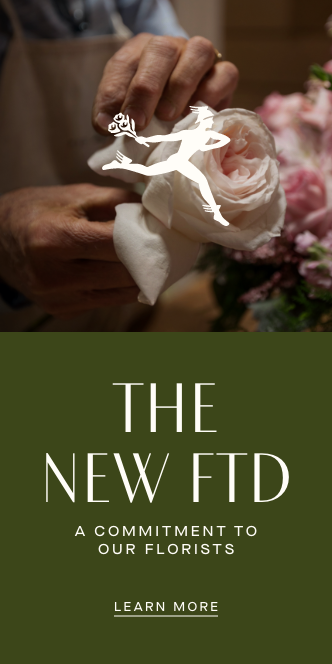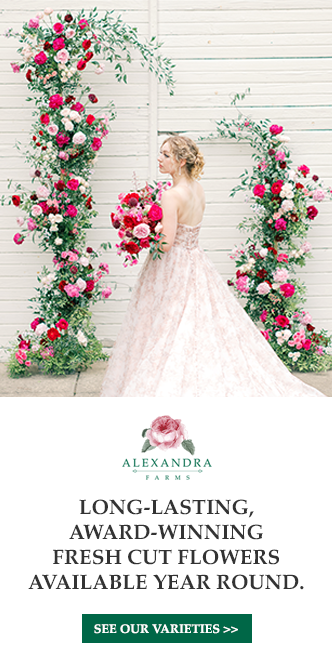
In Season: Garden Roses
By: Jules Lewis Gibson
The allure of garden roses is universal. This queen of flowers has played a major role in poetry, religion, art and literature; music, medicine, fashion design, perfume and home decoration—even cuisine. An ancient flower grown for more than 5,000 years throughout Asia before it ever made an appearance in the Western world. More than 30,000 varieties of roses are suggested tobe grown across the globe today. The significant breeding of modern times started slowly in Europe, from about the 17th century.
A major contributor in the early 19th century was Empress Josephine of France who patronized the development of rosebreeding. Empress Josephine Bonaparte, wife of Napoleon, was a passionate rose lover and collector.
While her husband was acquiring an empire, she was acquiring property and 250 different roses from all over the world toadd to the gardens of Malmaison, her chateau retreat outside Paris. Being Empress had its benefits andrewards during war time. The French Navy was enlisted to confiscate any plants or rose seeds fromships at sea and her large purchases from the British nursery Kennedy and Lee were permitted safepassage through the naval blockade.

Between 1804 and 1814, Empress Josephine built her rose collection. It was to become the greatest and largest rose collection in the world, unsurpassed until the creation of Sangerhausen, inGermany, and L’Hay-les-Roses, outside Paris, one century later. The famed botanical illustrator Pierre-Joseph Redouté meticulously painted 117 of Josephine’s roses in his landmark watercolor book, Les Roses. His renditions are, even today, considered classic references to the differences in rose varieties.

The rose officially became the “National Floral Emblem” of the United States in the fall of 1986, with President Ronald Reagan signing the declaration, which included these sentiments:

“Americans have always loved the flowers with which God decorates our land. More often than any other flower, we hold the rose dear as the symbol of life and love and devotion, of beauty and eternity. … We see proof of this everywhere.
We grow roses in all our 50 states. We find roses throughout our art, music and literature. We decorate our celebrationsand parades with roses. Most of all, we present roses to those we love, and we lavish them on our altars, our civilshrines and the final resting places of our honored dead.”

‘Sunset’ by Alexander Farms
“Old Garden Roses” (sometimes called “Antique” or “Heirloom” roses) and “Modern Roses.”
The Old Garden Roses are those that were cultivated in distinct classes prior to 1867, and the Modern Roses are those that followed. 1867 is an important year in rose history because it marks the debut of the hybrid tea rose. To have survived for thousands of years, the Old Garden Roses possessed desirable traits that allowed them to adapt to increasingly difficult situations. They were low maintenance; grew well in a variety of soil conditions; required little, if any, pruning; survived winters with no extra protection; and were very disease- and insect- resistant. And they most certainly were fragrant.
Most Old Garden Roses bloomed only once, in the summer. Many were shrubby (one might even say overly vigorous), sprawling plants that required room to roam. The blossoms, too, often single instead of the more desirable double, were not showy enough to last as cut flowers. The unfolding buds were not attractive—nothing to compare to the beauty of the hybrid tea bud unfolding. The old-fashioned plants needed shaping, and the flowers were restricted to shades of pink.

Roses have been said to exude seven basic fragrances: rose, Nasturtium, violet, apple, lemon, clove and tea. The antique roses typify the “classic” rose fragrance because, of the seven scents, they possess the rose scent, in most cases. Rose experts have commented that roses release their most intense fragrance when the blossoms are half open. In the morning, while a slight touch of dewy moisture lingers on the petals, the warming effect of early sun will encourage the release of fragrant oils from the petals and, occasionally, the leaves. Hot sun, rain, wind and high humidity work against fragrance.
Care Instructions
The First Cut: Trimming the Stems
Preparing roses involves one essential step of removal: Always cut an inch or more from the bottom of the stem with a clean, sharp knife or bypass cutter, to facilitate renewed uptake of water and nutrients. With garden roses, this is advisable even if you are using a no-cut flower-food solution.
Rose leaves function as the lungs of a plant. On their underside are pores, called “stomata,” that facilitate gas exchange. They literally allow the rose stem to breathe. And that “breathing” encourages the flow of water and nutrients up the stem, allowing the cut flower to open and color up. Leaves that fall below the water line in a vase or holding container tend to favor the growth of bacteria in the water. These leaves should always be removed with a clean, sharp knife. And, yes, often you will need to remove all the leaves on a rose stem to accommodate your design. But whenever possible, it’s helpful to the vase life of a rose to leave any foliage intact that won’t be submerged or crushed.
One technique for dealing with thorns is to break them off by hand, simply pushing them aside one by one. This is time consuming, and it may cause some tissue damage. A preferable technique is to trim each thorn with a clipper, dulling the point.
Thorns actually help the rose to take up water. And while no one wants to get stuck by a thorn, when thorns and leaves are roughly stripped from the stem, that process runs the risk of tearing at the skin of the rose stem and creating an open wound.

Consider this: Any cutting that is done to a rose, including the peeling of guard petals and de-thorning, leaves wounded tissue exposed to floating bacteria and the spores of Botrytis mold. “Above the water line, that wound becomes a place where air and bacteria can enter the stem,” says J Schwanke, AIFD, AAF, PFCI, of uBloom.com. Air and bacteria can block the flow of water and nutrients, shortening the rose’s life.
Therefore, when roses are held in buckets or arranged in vases, it’s ideal to remove only those thorns and leaves that fall below the water line. The real key is to do whatever paring and pruning that needs to be done with minimal damage to the rose. But if you have especially thorny stems, you may need to resort to grasping the stem with a tool like a stem stripper or a heavy-duty terrycloth towel. Either of these will remove leaves as well as removing
or dulling thorns. Always pull from the top of the stem toward the bottom: conveniently, the thorns themselves point downward. Another reason to remove leaves and thorns that fall below the water line is that they can tear at leaves on other stems as you insert them into a vase or bucket.
Related Articles
Related
The Art (and Algorithm) of Valentine’s Day 2026
How AI, sustainability and emotional design are transforming one of the industry’s biggest days. By Kat Castagnoli, AIFD With Valentine’s Day 2026 landing on a Saturday, florists nationwide are bracing for a complex mix of opportunity and chaos. The good news?...
Guided by Nature
Korean floral design beckons tranquility in a hectic world. By Bianca Bina Spacious, balanced and natural. Grounded in foundational principles, Korean design is built on a simple yet intentional framework that embraces ethereal, asymmetric forms. Every element...
2025 Holiday Trends
Big bows, bold blooms and vintage vibes capture the spotlight. By Kat Castagnoli, AIFD, CCF In a season brimming with velvet ribbons, oversized ornaments and cozy color palettes, this year’s holiday decor trends are all about curated contrast. Think maximalism meets...
























